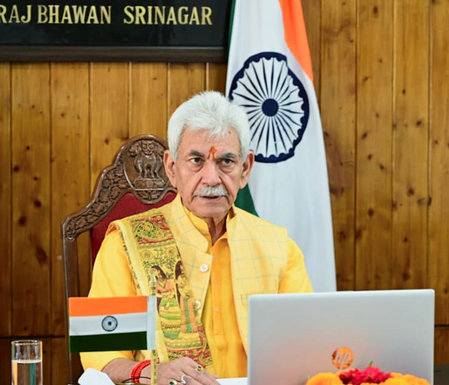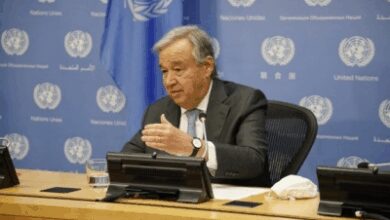J&K L-G leaves for Russia to bring back holy relics of Lord Buddha

Jammu, Oct 17 (IANS) Jammu and Kashmir Lt Governor Manoj Sinha on Friday left for Russia to bring back the holy relics of Lord Buddha to India.
L-G Manoj Sinha said that he is leaving for Kalmykia in Russia to lead a delegation entrusted with bringing back the holy relics of Lord Buddha after a week-long exposition.
In a post on X, L-G’s office said, “Leaving for Kalmykia, Russia, where I will lead the delegation to bring back holy relics of Lord Buddha after a week-long exposition. I sincerely thank the Hon’ble Prime Minister Shri @narendramodi Ji for this sacred opportunity. ‘Om Namo Buddhaya’.”
The exposition is being organised by the Ministry of Culture in collaboration with the International Buddhist Confederation, the National Museum, and the Indira Gandhi National Centre for the Arts.
The sacred relics are to be enshrined at the Geden Sheddup Choikorling Monastery, the main Buddhist monastery in Elista, popularly known as the ‘Golden Abode of Shakyamuni Buddha’.
India has a large population of Buddhists. The Buddhist population in India is approximately 8.4 million, making up about 0.7 per cent of the total population, according to the 2011 census.
While Buddhism originated in India, the religion is a minority in the country today. The majority of Indian Buddhists live in Maharashtra, followed by states like Arunachal Pradesh, Mizoram, Sikkim, and West Bengal. Buddhism flourished in India, particularly under Emperor Ashoka, but its numbers declined in India over the centuries.
A large portion of India’s Buddhists, around 87 per cent according to one estimate, are followers of Navayana Buddhism, with most residing in Maharashtra.
Kashmir has several significant Buddhist sites, including the ruins at Harwan and Ushkur, ancient Jayendra Vihara, and the archaeological complex at Ambaran near Akhnoor.
These locations highlight Kashmir’s historical importance in the spread of Buddhism and the presence of influential Buddhist centres, which attracted scholars from across Asia.
The 4th Buddhist council was held at Harwan near Srinagar in Kashmir, under the patronage of the Kushan king Kanishka, with the ancient ruins from the era providing evidence of this connection
It features ruins and tiles with image carvings, and its history is tied to prominent figures like the Buddhist master Nagarjuna.
An ancient Buddhist site near Baramulla, Ushkur, is noted for its historical significance, including the discovery of a terracotta head of Buddha during excavations. It is identified with the ancient town of Huskapura.
Jayandra Vihara is another ancient Buddhist site near Baramulla. This was a renowned urban learning centre in ancient Kashmir, known both inside and outside of India. It was a place of study for foreign scholars, including the Chinese monk Hiuen Tsang, who stayed there for two years in the seventh century.
Ambaran near Akhnoor in Jammu is an archaeological site of a monastic complex that provides insights into the Buddhist cultural evolution in the region, with evidence of its use from the 2nd century BCE to the 7th century CE.
Parihaspur, outside Srinagar city, was a monastery built by King Lalitaditya of Kashmir and was famous for its colossal image of Buddha.
–IANS
sq/dpb





